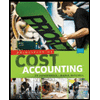
Income Statement:
It is a financial statement that shows the
It is a financial statement that shows the amount of profit retained by the company for future unforeseen events.
It shows the financial position of an enterprise. It consists of assets, liabilities, and
Closing Entries:
These entries are made for that item whose balance needs to be zero for the next accounting period otherwise data from two accounting periods will get mixed and we only want to see the data of one accounting period in it.
Accounting rules regarding journal entries:
- Balance increases when: Assets, losses, and expenses get debited and liabilities, gains, and revenue get credited.
- Balance decrease when: Assets, losses, and expenses get credited and liabilities, gains, and revenue get debited.
Return on Asset:
It tells about how much the company is earning from the total amount of assets it has. It is determined by dividing net income from total average assets into percentage terms.
Debt Ratio:
It shows how much of the company’s assets are bought using debt capital. The higher the debt ratio higher the financial risk, lower the debt ratio lower the financial risk. it comes after dividing debt capital by total assets.
Profit Margin Ratio:
It shows how much the company is earning for every dollar of its revenue. It comes after dividing net sales from revenue into percentage terms.
It shows whether the company will be able to pay its current liabilities out of its current asset or not. It comes after dividing current liabilities by current assets.
1.
To prepare: Income statement, statement of retained earnings, and classified balance sheet.
2.
To prepare: Closing entries
3.
a.
Return on assets ratio.
b.
Debt ratio.
c.
Profit margin ratio.
d.
Current ratio.
Want to see the full answer?
Check out a sample textbook solution
Chapter 3 Solutions
FINANCIAL + MANAG. ACCT. (LL) W/CONNECT
- I am trying to find the accurate solution to this general accounting problem with appropriate explanations.arrow_forwardWhat is the primary goal of financial management?A) Maximizing profitsB) Maximizing shareholder wealthC) Minimizing costsD) Ensuring liquidityarrow_forwardWhich of the following is NOT an example of an operating activity in cash flow statement? a) Receipts from customersb) Payments to suppliersc) Proceeds from issuing sharesd) Payments to employeesarrow_forward
- Can you solve this general accounting problem using accurate calculation methods?arrow_forwardPlease provide the answer to this general accounting question using the right approach.arrow_forwardThe accounting equation is:a) Assets + Liabilities = Equityb) Assets = Liabilities + Equityc) Liabilities = Assets + Equityd) Assets + Equity = Liabilitiesarrow_forward
- General Accountingarrow_forwardThe primary objective of financial accounting is to:a) Provide management with detailed reports for decision-making.b) Help the company save taxes.c) Provide financial information to external users.d) Track inventory levels. need help!arrow_forwardI need help with this general accounting problem using proper accounting guidelines.arrow_forward
 College Accounting, Chapters 1-27 (New in Account...AccountingISBN:9781305666160Author:James A. Heintz, Robert W. ParryPublisher:Cengage LearningPrinciples of Accounting Volume 1AccountingISBN:9781947172685Author:OpenStaxPublisher:OpenStax College
College Accounting, Chapters 1-27 (New in Account...AccountingISBN:9781305666160Author:James A. Heintz, Robert W. ParryPublisher:Cengage LearningPrinciples of Accounting Volume 1AccountingISBN:9781947172685Author:OpenStaxPublisher:OpenStax College- Century 21 Accounting Multicolumn JournalAccountingISBN:9781337679503Author:GilbertsonPublisher:Cengage
 Principles of Cost AccountingAccountingISBN:9781305087408Author:Edward J. Vanderbeck, Maria R. MitchellPublisher:Cengage Learning
Principles of Cost AccountingAccountingISBN:9781305087408Author:Edward J. Vanderbeck, Maria R. MitchellPublisher:Cengage Learning College Accounting (Book Only): A Career ApproachAccountingISBN:9781337280570Author:Scott, Cathy J.Publisher:South-Western College Pub
College Accounting (Book Only): A Career ApproachAccountingISBN:9781337280570Author:Scott, Cathy J.Publisher:South-Western College Pub





